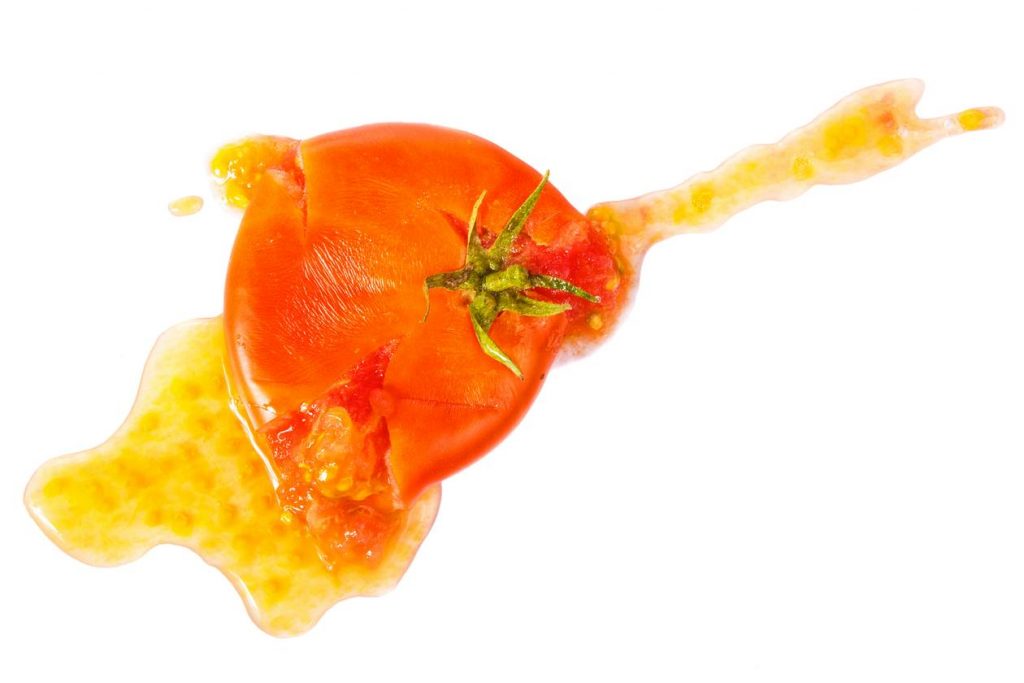Tomatoes are one of the easiest plants for seed saving. Generally they are self-fertile so there are no problems with cross-pollination. They do require some processing after harvesting though.
F1 Hybrid Tomatoes – Seed Saving
The most common problem people tell me about is that they have saved their own tomato seeds successfully and they germinated but the plants were very different to the parent plant.
Almost invariably it turns out the parent plant was an F1 Hybrid which will not breed true as it is not a pure line. You cannot save seed and get the same plant from F1 Hybrids. There’s a more detailed article here: F1 Hybrids
Seed Saving from Potato Leaf & Some Heirloom Tomato Varieties
Nearly all modern and many heirloom or heritage tomatoes are self-fertile and cross-pollination can only be done manually on purpose. Some heirlooms and potato leaf varieties can be pollinated by insects, so cross-pollination is possible. This results most often in inferior plants compared to the parents but you might just get a winner.
Unless you are growing two different open-pollinated types side by side or in the same greenhouse, you are very unlikely to have a problem with saved seed. Even if you are growing two varieties side by side you will most likely be OK.
Harvesting & Collecting Tomato Seeds for Saving
Harvesting and collecting tomato seeds for saving could not be easier. Choose a healthy plant with no bad traits and pick a tomato or two when they are really ripe. It is important the fruit is ripe – if unsure keep in a bowl with a banana for a couple of days.
The banana gives of minute amounts of ethylene gas which encourages ripening.
Processing & Storing Home Saved Tomato Seed
The tomato is a tasty fruit that appeals to many animals as it does to us. The seeds are designed to be eaten, passed through the gut and then germinate when excreted along with some nutritious manure
That’s why ‘wild’ tomatoes used to spring up around sewerage works in the south of the country in times gone by. More efficient and cleaner sewerage works have stopped that.
To protect the seeds on their journey through the gut they are coated with a jelly like substance which we need to remove to allow proper storage and germination.
Fermenting the Tomato Seeds
Fermenting the tomato seeds removes the protective jelly seed coating and kills off any diseases that might be transmitted on the seeds.
Cut the tomato in half and squeeze the pulp and seeds into a jar along with some water at room temperature. If saving from more than one variety, just put one variety per jar and label the jars. You will not tell them apart otherwise.
Put the jar in a warm place and stir the contents a couple of times a day. Don’t put an airtight lid on the jar – the contents are going to ferment and produce gas which can cause a jar to explode!
Form and tie (or use an elastic band) a jar top with a paper towel or cheesecloth to control smell and fruit flies.
The contents will form a mould on the top of the water. Fermentation is complete when bubbles form on top and seeds settle to the jar bottom in a watery liquid. You need to remove seeds now or they’ll germinate.
First, fork out the mould. Then pour the rest into a mesh sieve and rinse well under running water. Pick out any pulp bits.
Conventional advice is to spread the seeds out on a paper or glass dish and leave in a warm dry spot to thoroughly dry. Never apply heat.
If you spread the seeds out on a paper towel they will stick to the towel when they dry. This can be quite useful if you space the seeds out whilst they’re still wet. Come sowing time, cut the sheet up and sow along with the paper which will dissolve.
It’s a bit like the new trend for buying seed tapes to do the spacing for you.
Storing Tomato Seeds
Once dry, place in an envelope and label with variety and year saved. Store in an airtight tin or a large jar with a lid. Desiccants are highly recommended such as the little silica gel bags found in shoe boxes, new handbags, etc, or simply add some dry, uncooked rice or a bit of milk powder to each closed container. These ensure no moisture problems.
At a minimum your seeds should be fine for 3 years in store and with care you can get 5 years lifespan. I have heard of tomato seeds kept dry in a fridge showing good germination after 20 years!
Seed Saving Articles, Information & Resources
- Freezing and Cold Storing Seeds for Long Term Storage
- Saving Your Own Seeds – General Guide to Seed Saving
- Seed Saving to Improve Biodiversity
- Seed Storage & Longevity Lifespan – How Long Seeds Will Keep For
- Seed Germination & Viability Testing
- Seed Saving: Storing Seeds: Seed Viability
- What Are F1 Plants & Seeds: How & Why of F1 Hybrids
- Seed Saving Heirloom or Heritage Seeds
- Seed Saving: Carrots | Save Your Own Carrot Seed
- Seed Saving: Peas | Save Your Own Pea Seed
- Seed Saving: Tomatoes | Save Your Own Tomato Seed



